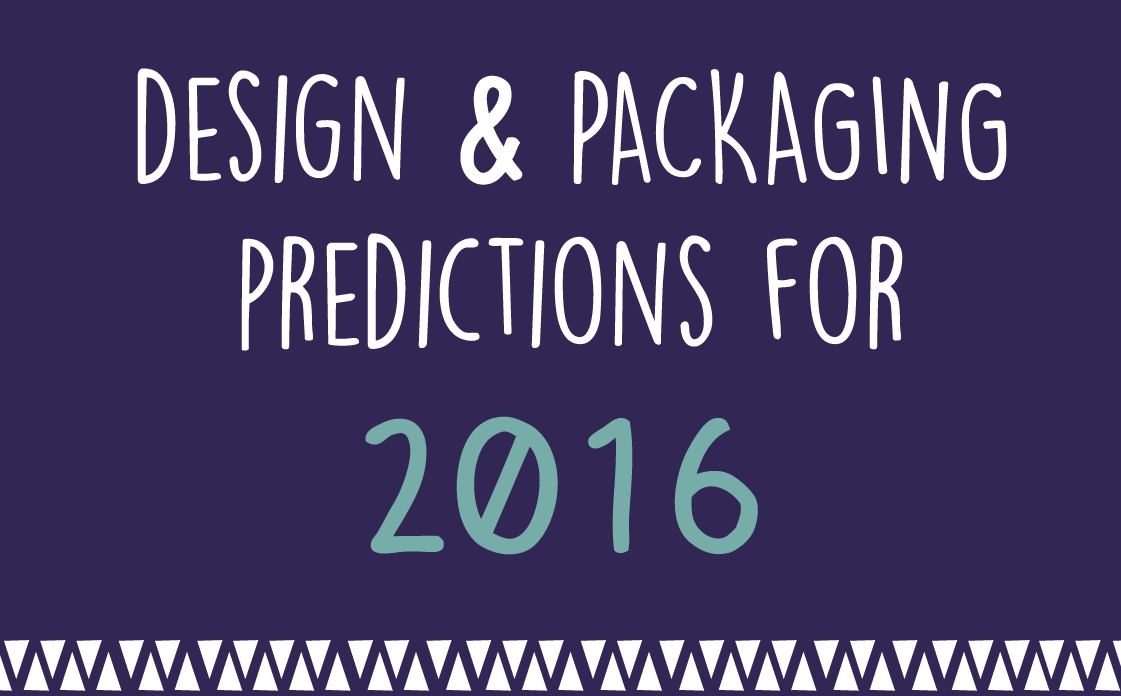
Design & Packaging Trends 2016
Here we share our predictions for design and packaging trends for 2016. There are some new trends on the scene this year along with current trends that are set to rise in popularity throughout 2016. See what you think. We’d love to hear your feedback regarding trends and where you see the future of design and packaging.
Personalisation in Packaging
Personalisation in packaging is something that has been increasing in popularity as the creation of personalised items becomes more straightforward due to technological advancements. Once a tool only used within luxury brands, with the development of digital workflows such as Smartflow and digital print in recent years personalised products can now be found online and in your local supermarket.
Brands want to engage with consumers on a more personal level in order to increase brand love and encourage sales. The hope is that the more personal the product to the consumer the more sales a brand will achieve. The huge, global success of the Coca-cola ‘share a coke’ campaign (launched in Summer 2013) has shown that personalisation can work well in different global markets. Sales of Coca Cola increased by 4% globally following the initial launch of Share a Coke.
Brands such as Oreo, Nutella and Marmite have all embraced personalisation. We predict that other brands will grab hold of personalisation over the coming months, linking personalisation and gifting which will continue to grow with brands using recognised events as a reason to launch personal campaigns.
Consumer Engagement in Packaging
Growing consumer engagement is an important brand strategy to increase sales. Ways to encourage consumer engagement include interacting using social media and encouraging feedback from consumers. Using digital print to produce packaging has seen brands looking to feature consumer feedback on packaging
QR codes have been featured on packaging for many years now and are often used to try to encourage people to engage with the brands. Packaging is no longer a throw away item, it is an interactive tool when considering technologies such as augmented reality and near field communications.
Geometric Patterns
Pattern is used in design and the industry tends to goes through various phases of different styles based on influential trends from fashion, film and general global events. 2016 sees a bold, punchy style of pattern with the popularity of geometric patterns being seen in many elements of design. Repeat patterns made up of shapes and vibrant colours create eye-catching designs on-shelf to attract consumers. Geometric patterns can be crazy and colourful or chic and minimalist, there a options for every brand when using a geometric style.
Pastels and Neons in Design
Following on from the Pantone colours of the year for 2016 – Rose Quartz and Serenity, pastel colours will continue to play a prominent role in colour schemes for both interior home designs and packaging. Pastels, specifically muted pastel colours that are gender neutral are a focus for colour trends during 2016.
To contrast this a secondary colour trend will be bright, neon colours as stated in the Pantone spring report. These two styles will be used together and separately. We feel the two trends will contrast nicely against each other to create fabulous colour schemes in fashion and design trends throughout the year.
Modular Design for Web Platforms
Modular web design platforms is a trend that has really taken off in the last year in main due to the growth of touch screen technology on smartphones, tablets and laptops. Grids have always been something that is highly important within design, especially when laying out items like brochures. Good brochure design is about creating a layout that is interesting to the audience’s eye whilst enabling a reader to smoothly navigate through information.
Modular web platforms look to achieve clarity and visual interest, breaking up websites into block structured sections in order to make the platforms appealing to the viewer. Modular grids are an alternative way of presenting information rather than using standard columns and rows. Using big blocks for imagery next to smaller blocks of text and vice versa along with bright blocks of colour interspaced throughout means that the viewer is likely to spend more time looking at the website and engage with it more than they would a standard layout.
